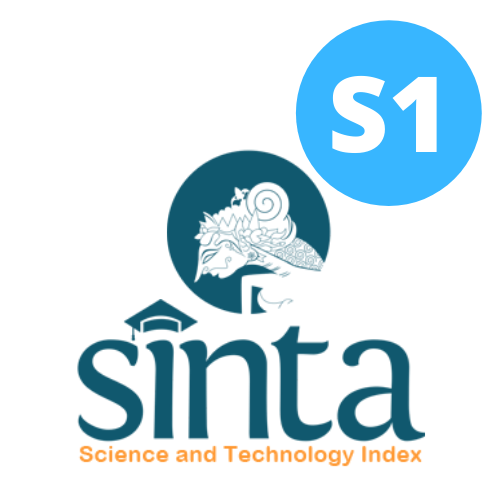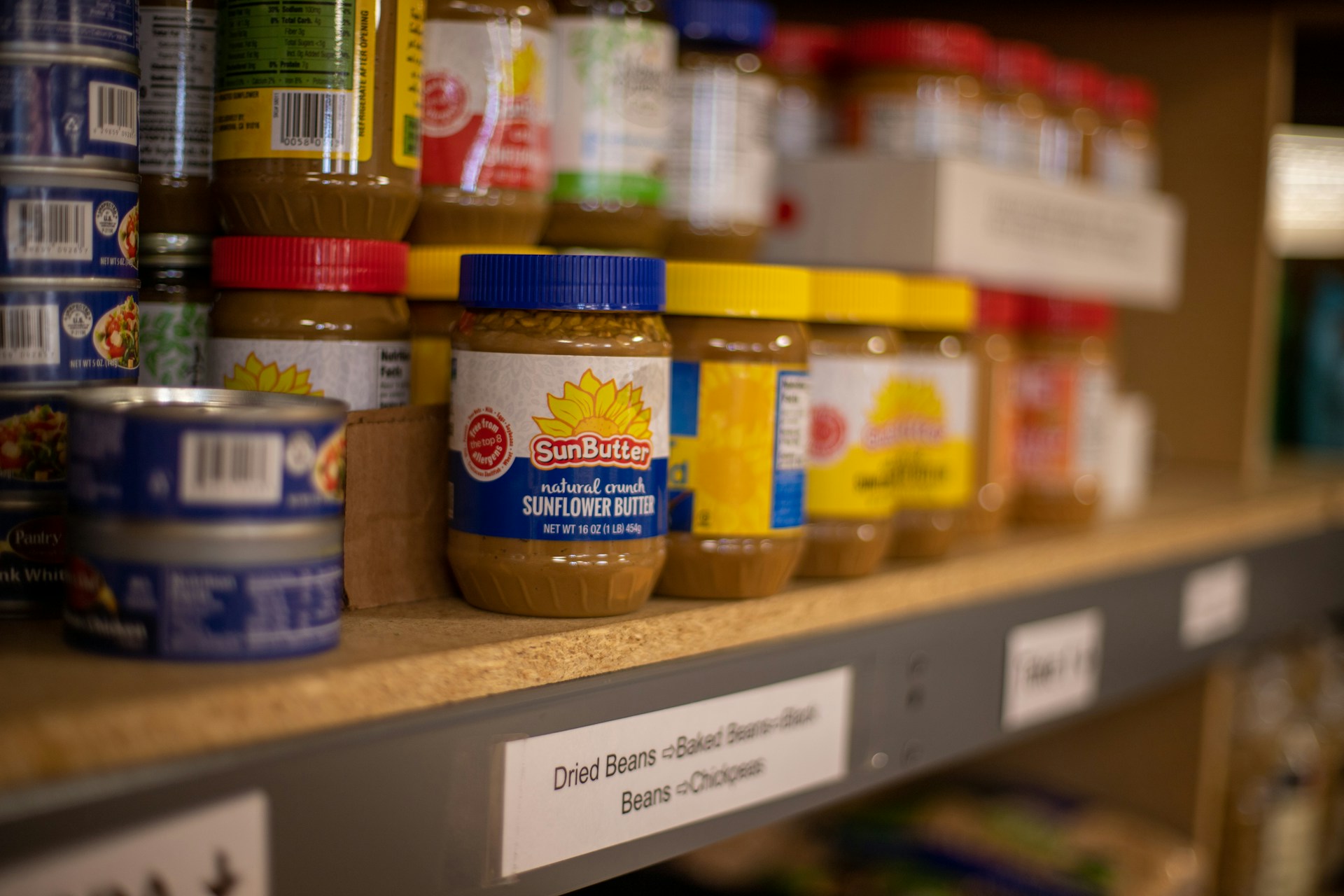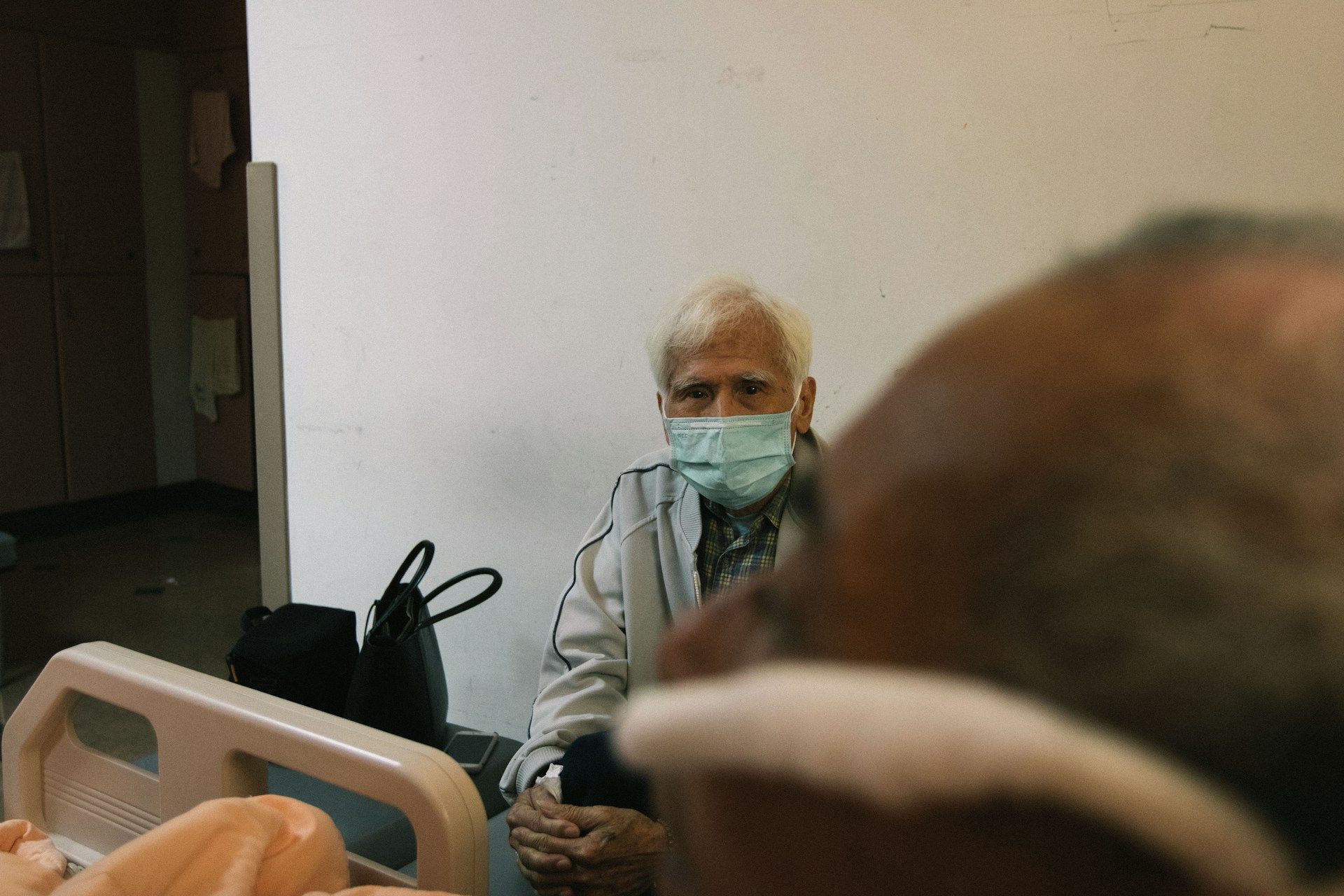Effectiveness of Food Fortification to Anemia in Adolescents: A Systematic Review and Meta-Analysis
Efektivitas Fortifikasi Pangan terhadap Kadar Hemoglobin pada Remaja: Tinjauan Sistematis dan Meta-Analisis

Downloads
Background: Anemia is still a global problem with nearly 2 billion people worldwide experiencing anemia by 2021. The population most vulnerable to anemia is adolescent girls. Anemia is prevalent in low- and middle-income countries. Food fortification is an anemia prevention strategy that is considered the most effective, economical, and able to reach the wider community.
Objectives: To assess the effectiveness of iron (Fe)-fortified foods, whether or not supplemented with other micronutrients, on adolescent anemia in low- and middle-income countries.
Methods: This research follows the PRISMA protocol and PICO rules. The databases used were PubMed, Scopus, Science Direct, and Cochrane. Study participants were adolescent girls aged 10-18 who received Fe-fortified food intervention. The comparison was adolescents who were given non-fortified food or a placebo. The outcome of interest was hemoglobin (Hb) level.
Discussions: Of the 482 studies obtained, 10 studies were eligible, and eight studies proceeded to meta-analysis. The results of the meta-analysis showed that the mean change in Hb was higher in the intervention group compared to the control group. However, the variation between studies was heterogeneous (I2=97%, p-value<0.01). The highest mean difference value was fortification in soy sauce with 40 mg NaFeEDTA with Standardized Mean Difference (SMD)=2.88 mg/dL, while the lowest was rice fortification with SMD=0.01 mg/dL.
Conclusions: This study can serve as a reference for creating intervention programs for fortification of foodstuffs to prevent anemia in adolescent girls in developing countries and upper-middle-income countries.
Global Health Metrics (2019). Anaemia - Level 1 Impairment. Lancet 396, S208-209 (2020). https://www.healthdata.org/
Kumar, A., Sharma, E., Marley, A., Samaan, M. A. & Brookes, M. J. Iron Deficiency Anaemia: Pathophysiology, Assessment, Practical Management. BMJ Open Gastroenterol. 9, e000759 (2022). https://doi.org/10.1136/bmjgast-2021-000759
Warner MJ, K. M. Iron Deficiency Anemia. (In: StatPearls [Internet]. Treasure Island (FL): StatPearls Publishing;, 2023).
Eberwein, J. D. et al. An Investment Framework for Nutrition in Kenya. An Investment Framework for Nutrition in Kenya at https://doi.org/10.1596/26282 (2016).
Kaur, N., Agarwal, A. & Sabharwal, M. Food Fortification Strategies to Deliver Nutrients for The Management of Iron Deficiency Anaemia. Curr. Res. Food Sci. 5, 2094–2107 (2022). https://doi.org/10.1016/j.crfs.2022.10.020
De-Regil, L. M., Suchdev, P. S., Vist, G. E., Walleser, S. & Peña-Rosas, J. P. Home Fortification of Foods with Multiple Micronutrient Powders for Health and Nutrition in Children Under Two Years of Age. Cochrane Database of Systematic Reviews CD008959 at https://doi.org/10.1002/14651858.CD008959.pub2 (2011).
Hurrell, R. F. Iron Fortification Practices and Implications for Iron Addition to Salt. J. Nutr. 151, 3S-14S (2021). https://doi.org/10.1093/jn/nxaa175
Sadighi, J., Nedjat, S. & Rostami, R. Systematic review and meta-analysis of the effect of iron-fortified flour on iron status of populations worldwide. Public Health Nutr. 22, 3465–3484 (2019). https://doi.org/10.1017/S1368980019002179
West SL, Gartlehner G, Mansfield AJ, et al. Comparative Effectiveness Review Methods: Clinical Heterogeneity [Internet]. (Rockville (MD): Agency for Healthcare Research and Quality (US), 2010). https://www.ncbi.nlm.nih.gov/books/NBK53310/
Lakshmi, E., Easwaran, P. & Saraswathy, E. An Intervention Study to Combat Iron Deficiency Anaemia in Adolescent Girls - Food Fortification Strategy. Biosci. Biotechnol. Res. Asia 13, 1141–1146 (2016). https://doi.org/10.13005/bbra/2144
Lannotti, L. et al. Fortified Snack Reduced Anemia in Rural School-Aged Children of Haiti: A Cluster-Randomized, Controlled Trial. PLoS One 11, e0168121 (2016). https://doi.org/10.1371/journal.pone.0168121
Perignon, M. et al. Impact of Multi-Micronutrient Fortified Rice on Hemoglobin, Iron and Vitamin A Status of Cambodian Schoolchildren: a Double-Blind Cluster-Randomized Controlled Trial. Nutrients 8, 29 (2016). https://doi.org/10.3390/nu8010029
Muthayya, S. et al. Iron Fortification of Whole Wheat Flour Reduces Iron Deficiency and Iron Deficiency Anemia and Increases Body Iron Stores in Indian School-Aged Children1-4. J. Nutr. 142, 1997–2003 (2012). https://doi.org/10.3945/jn.111.155135
Miglioranza, L. H. S. et al. Effectiveness of Fortification of Corn Flour-Derived Products with Hydrogen-Reduced Elemental Iron on Iron-Deficiency Anaemia in Children and Adolescents in Southern Brazil. Public Health Nutr. 12, 244–248 (2009). https://doi.org/10.1017/S1368980008003704
Longfils, P. et al. A Comparative Intervention Trial on Fish Sauce Fortified with NaFe-EDTA and FeSO4+citrate in Iron Deficiency Anemic School Children in Kampot, Cambodia. Asia Pac. J. Clin. Nutr. 17, 250–7 (2008). https://doi.org/10.6133/apjcn.2008.17.2.10
Ziauddin Hyder, S. M. et al. A Multiple-Micronutrient-Fortified Beverage Affects Hemoglobin, Iron, and Vitamin A Status and Growth in Adolescent Girls in Rural Bangladesh ,. J. Nutr. 137, 2147–2153 (2007). https://doi.org/10.1093/jn/137.9.2147
Sun, J. et al. Effects of Wheat Flour Fortified with Different Iron Fortificants on Iron Status and Anemia Prevalence in Iron Deficient Anemic Students in Northern China. Asia Pac. J. Clin. Nutr. 16, 116–121 (2007). https://doi.org/10.6133/apjcn.2007.16.1.15
Scrimshaw, N. S. & Gleason, G. R. Commentary on “Studies on the Effectiveness of Nafeedta-Fortified Soy Sauce in Controlling Iron Deficiency: A Population-Based Intervention Trial”. Food Nutr. Bull. 26, 187–189 (2005). https://doi.org/10.1177/156482650502600202
Huo, J. et al. Therapeutic Effects of NaFeEDTA‐Fortified Soy Sauce in Anaemic Children in China. Asia Pac. J. Clin. Nutr. 11, 123–127 (2002). https://doi.org/10.1046/j.1440-6047.2002.00277.x
Athe, R., Dwivedi, R., Pati, S., Mazumder, A. & Banset, U. Meta-Analysis Approach on Iron Fortification and Its Effect on Pregnancy and Its Outcome Through Randomized, Controlled Trials. J. Fam. Med. Prim. Care 9, 513 (2020). https://doi.org/10.4103/jfmpc.jfmpc_817_19
Liberal, Â., Pinela, J., Vívar-Quintana, A. M., Ferreira, I. C. F. R. & Barros, L. Fighting Iron-Deficiency Anemia: Innovations in Food Fortificants and Biofortification Strategies. Foods 9, 1871 (2020). https://doi.org/10.3390/foods9121871
Shubham, K. et al. Iron Deficiency Anemia: A Comprehensive Review on Iron Absorption, Bioavailability and Emerging Food Fortification Approaches. Trends Food Sci. Technol. 99, 58–75 (2020). https://doi.org/10.1016/j.tifs.2020.02.021
Piskin, E., Cianciosi, D., Gulec, S., Tomas, M. & Capanoglu, E. Iron Absorption: Factors, Limitations, and Improvement Methods. ACS Omega 7, 20441–20456 (2022). https://doi.org/10.1021/acsomega.2c01833
Yin, X. et al. Chemical Stability of Ascorbic Acid Integrated into Commercial Products: A Review on Bioactivity and Delivery Technology. Antioxidants 11, 153 (2022). https://doi.org/10.3390/antiox11010153
Sabatier, M. et al. Impact of Ascorbic Acid on the In Vitro Iron Bioavailability of a Casein-Based Iron Fortificant. Nutrients vol. 12 at https://doi.org/10.3390/nu12092776 (2020).
Teucher, Olivares & Cori. Enhancers of Iron Absorption: Ascorbic Acid and other Organic Acids. Int. J. Vitam. Nutr. Res. 74, 403–419 (2004). https://doi.org/10.1024/0300-9831.74.6.403
Degerud, E. M., Manger, M. S., Strand, T. A. & Dierkes, J. Bioavailability of Iron, Vitamin A, Zinc, and Folic Acid when Added to Condiments and Seasonings. Ann. N. Y. Acad. Sci. 1357, 29–42 (2015). https://doi.org/10.1111/nyas.12947
Fidler, M. C., Davidsson, L., Walczyk, T. & Hurrell, R. F. Iron Absorption from Fish Sauce and Soy Sauce Fortified with Sodium Iron EDTA. Am. J. Clin. Nutr. 78, 274–278 (2003). https://doi.org/10.1093/ajcn/78.2.274
Trinidad, T. P. et al. The Effect of Different Iron Fortificants on Iron Absorption from Iron-Fortified Rice. Food Nutr. Bull. 23, 203–208 (2002). https://doi.org/10.1177/15648265020233S140
Hackl, L. S. et al. Micronutrient-Fortified Rice can be a Significant Source of Dietary Bioavailable Iron in Schoolchildren from Rural Ghana. Sci. Adv. 5, eaau0790 (2019). https://doi.org/10.1126/sciadv.aau0790
World Health Organization. Nutritional Anaemias : Report of a WHO Group of Experts [Meeting Held in Geneva from 11 to 15 October 1971]. at https://iris.who.int/handle/10665/40977 (2006).
Peña-Rosas, J. P. et al. Fortification of Rice with Vitamins and Minerals for Addressing Micronutrient Malnutrition. Cochrane Database Syst. Rev. 2019, (2019). https://doi.org/10.1002/14651858.CD009902.pub2
Ramaswamy, G. et al. Effect of Iron-Fortified Rice on the Hemoglobin Level of The Individuals Aged more than Six Months: A Meta-Analysis of Controlled Trials. J. Fam. Med. Prim. Care 11, 7527–7536 (2022). https://doi.org/10.4103/jfmpc.jfmpc_409_22
Piccoli, N. B. et al. Rice Fortification: Its Potential for Improving Micronutrient Intake and Steps Required for Implementation at Scale. Food Nutr. Bull. 33, 360–372 (2012). https://doi.org/10.1177/15648265120334s312
Viner RM, Allen NB, P. G. Puberty, Developmental Processes, and Health Interventions. (The International Bank for Reconstruction and Development / The World Bank, 2017). https://www.ncbi.nlm.nih.gov/books/NBK525269/ doi: 10.1596/978-1-4648-0423-6_ch9
González-Domínguez, Á. et al. Iron Metabolism in Obesity and Metabolic Syndrome. Int. J. Mol. Sci. 21, 5529 (2020). https://doi.org/10.3390/ijms21155529
Copyright (c) 2024 Amerta Nutrition

This work is licensed under a Creative Commons Attribution-ShareAlike 4.0 International License.
AMERTA NUTR by Unair is licensed under a Creative Commons Attribution-ShareAlike 4.0 International License.
1. The journal allows the author to hold the copyright of the article without restrictions.
2. The journal allows the author(s) to retain publishing rights without restrictions
3. The legal formal aspect of journal publication accessibility refers to Creative Commons Attribution Share-Alike (CC BY-SA).
4. The Creative Commons Attribution Share-Alike (CC BY-SA) license allows re-distribution and re-use of a licensed work on the conditions that the creator is appropriately credited and that any derivative work is made available under "the same, similar or a compatible license”. Other than the conditions mentioned above, the editorial board is not responsible for copyright violation.












































